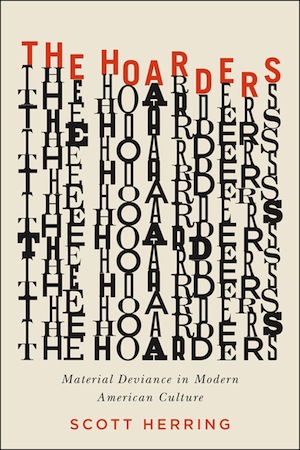The Hoarders

This past week, New Yorker critic Joan Acocella profiled Scott Herring’s The Hoarders, a foray into the history of material culture from the perspective of clutter fetish and our fascination with the perils surrounding the urge to organize. The question Herring asks, namely, “What counts as an acceptable material life—and who decides?,” takes on a gradient of meaning for Acocella, who confronts the material preferences of her ninety-three-year-old mother, which prove to be in accord with the DSM V‘s suggestion that, “hoarding sometimes begins in childhood, but that by the time the hoarders come to the attention of the authorities they tend to be old.”
In The Hoarders, Herring tells the tale of Homer and Langley Collyer, two brothers to whom we can trace a legend (um, legacy?) of modern hoarding, whose eccentricity and ill health (Langley took care of Homer, who was both rheumatic and blind) led to a lion’s den of accrual, and a rather unfortunate end. As Acocella explains:
In 1947, a caller alerted the police that someone in the Collyer mansion may have died. After a day’s search, the police found the body of Homer, sitting bent over, with his head on his knees. But where was Langley? It took workers eighteen days to find him. The house contained what, in the end, was said to have been more than a hundred and seventy tons of debris. There were toys, bicycles, guns, chandeliers, tapestries, thousands of books, fourteen grand pianos, an organ, the chassis of a Model T Ford, and Dr. Collyer’s canoe. There were also passbooks for bank accounts containing more than thirty thousand dollars, in today’s money.
As Herring describes it, the rooms were packed almost to the ceilings, but the mass, like a Swiss cheese, was pierced by tunnels, which Langley had equipped with booby traps to foil burglars. It was in one of those tunnels that his corpse, partly eaten by rats, was finally discovered, only a few feet away from where Homer’s body had been found. He was apparently bringing Homer some food when he accidentally set off one of his traps and entombed himself. The medical examiner estimated that Langley had been dead for about a month. Homer seems to have died of starvation, waiting for his dinner.
The New Yorker piece also confronts the grand dames of American hoarding, Little Edie and Big Edie Bouvier Beale, cousins to Jacqueline Kennedy Onassis, and the subjects of Albert and David Maysles’ cult classic documentary Grey Gardens. Acocella positions the Beales as camped-out, if charming, odd fellows, but also points to an underlying class-based assumption in our embrace of their peculiarities:
If they crammed twenty-eight rooms with junk, that’s in part because they had a house with twenty-eight rooms. And if they declined to do the dishes, wouldn’t you, on many nights, have preferred to omit that task?
This is only slightly out of sorts with the stance Herring adopts in the book: as material culture changes, so too do our interactions with it—and each other. You can read much more from Acocella in her profile, but her takehome—we are what we stuff, except what we stuff is subject to the scrutinies and perversions of our social order (class and race among them)—is worth mentioning: we should get out from under it now, because it’s only going to get worse.
Read more about The Hoarders here.